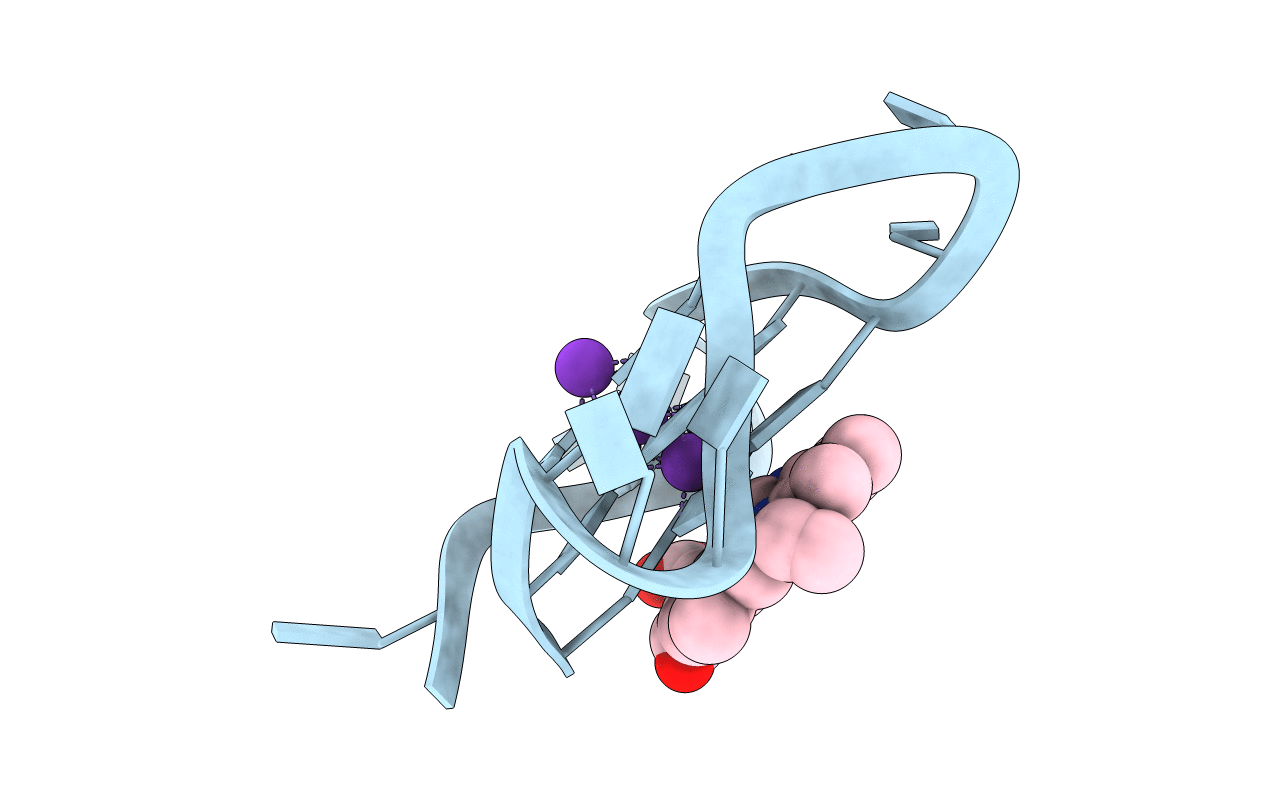
Deposition Date
2012-07-09
Release Date
2012-12-26
Last Version Date
2024-02-28
Entry Detail
PDB ID:
4G0F
Keywords:
Title:
Crystal structure of the complex of a human telomeric repeat G-quadruplex and N-methyl mesoporphyrin IX (P6)
Biological Source:
Source Organism:
Homo sapiens (Taxon ID: 9606)
Method Details:
Experimental Method:
Resolution:
2.15 Å
R-Value Free:
0.26
R-Value Work:
0.23
R-Value Observed:
0.23
Space Group:
P 6


